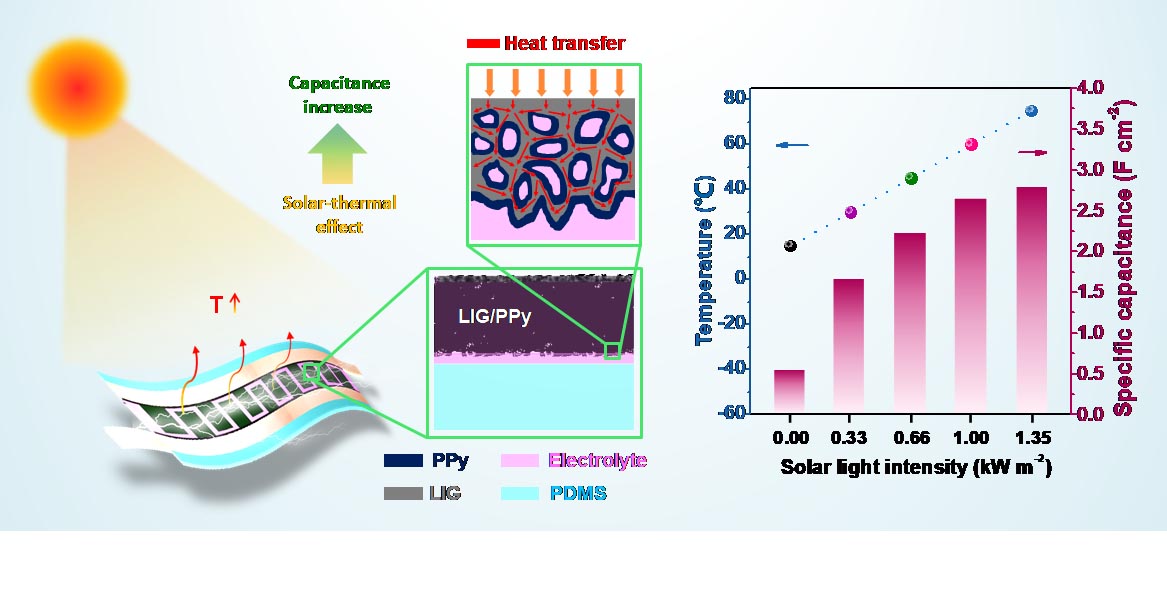
Prof. WANG Zhenyang's research group from Hefei Institutes of Physical Science (HFIPS) of the Chinese Academy of Sciences (CAS) has enhanced the energy storage capacity of graphene supercapacitors via solar heating.
Related research results were published in the Journal of Materials Chemistry A.
In low temperature environments, the hindered diffusion of electrolyte ions seriously restricts the electrochemical performance of supercapacitors. The electrode materials with solar-thermal properties are expected to provide a new strategy to solve this problem. However, it remains a challenge to develop electrode materials with both excellent solar-thermal properties and high energy storage capacity.
In this research, researchers prepared graphene films with three-dimensional porous structures via laser-induction technology. They composited the Polypyrrole uniformly composited into the graphene network by pulse electrodeposition. Graphene/polypyrrole composite electrodes were obtained and a new type of solar-thermally enhanced supercapacitor was thus constructed.
This supercapacitor has many advantages. When the temperature dropped to -30 centigrade, the electrochemical performance of the supercapacitor, which is normally severely degraded, could be enhanced rapidly to the level of room temperature under solar irradiation at light intensities of 1.0 kW m-2. Meanwhile, at room temperature (15°C), the surface temperature of the devices increased by 45°C under solar irradiation at light intensities of 1.0 kW m-2.
Dr. LI Nian, a member of the research team, explained the reason. After the temperature of electrodes was raised, the optimized pore structure and the increased electrolyte ion diffusion rate increased the energy storage capacity by 4.8 times (specific capacitance and energy density reach 2755.2 mF cm-2 and 21.55 mWh cm-3, respectively). In addition, since the solid electrolyte was well protected, the capacitance retention rate of the supercapacitor was still as high as 85.8% after 10,000 times of charging and discharging.
This work provided a new solution for the low temperature problem of supercapacitors and developing high energy density devices.
This work was supported by the National Key R&D Project of China, the National Natural Science Foundation of China, the Anhui Provincial Science and Technology Major Project, and the Anhui Provincial Key R&D Program.

Schematic diagram of fabricating process for the solar-thermal MSC and their energy storage performance under different light intensities (Image by LI Nian)